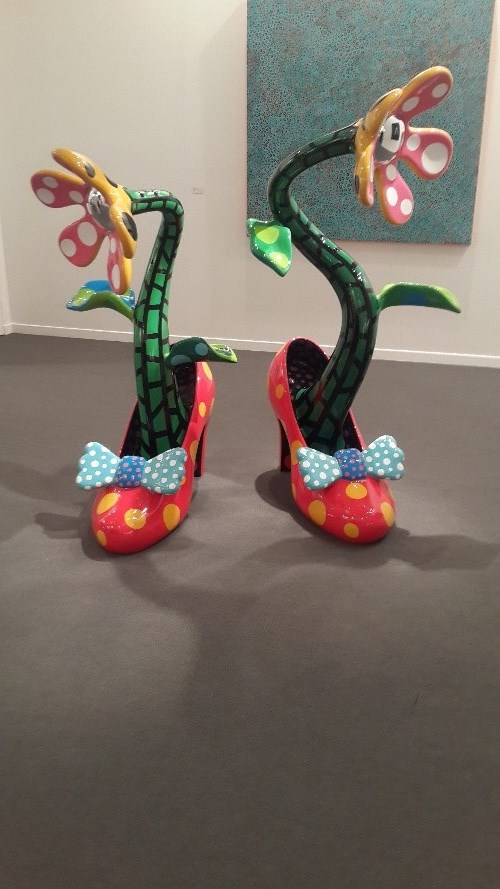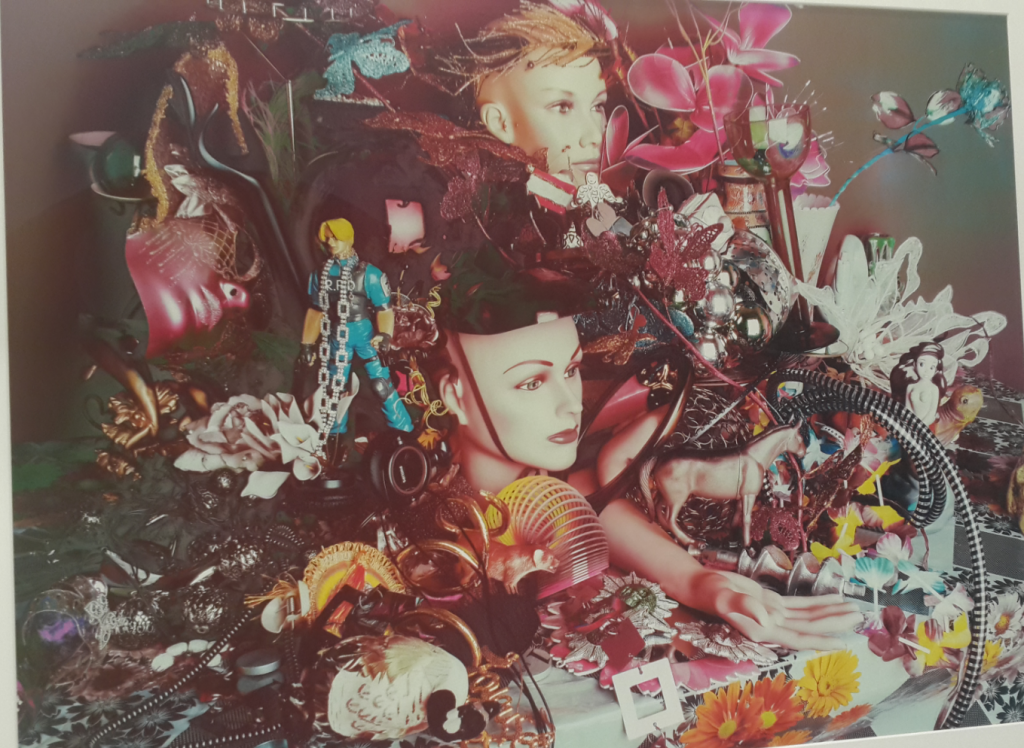
I’ve always been fascinated by stereotypes in general, because we often group individuals together and make collective, controversial judgements about them, despite not knowing them. There can be positive as well as negative stereotypes, and I believe that they are harmful to society because they oversimplify people’s qualities and create an inaccurate image of them, leading to discrimination. According to the Health Guidance website, each person has individual thoughts, feelings and desires, irrespective of their gender, which is why stereotyping them does not provide an accurate depiction of all the attributes of every person of each gender. Being a feminist growing up in the UAE, I find myself naturally drawn to targeting stereotypes about women in the Middle East.
According to Karen Cho, women in the Middle East are not strictly marginalized in society and the workforce, and are not always as oppressed or victimized as is often perceived. Some stereotypes about women in the Middle East are incorrect, whereas others have some level of truth to them, but implying that they pertain to all Middle Eastern women is a generalization.
Some of the common stereotypes I’ve heard about Middle Eastern women include:
Women in the Middle East are financially dependent on men
Middle Eastern women are often perceived to be dependent on their fathers, husbands or brothers, and although most women in this region were housewives, the number of working women is increasing, especially in GCC countries! According to Katty Marmenout, based at the Centre for Executive Education and Research in Abu Dhabi, women in the Middle East often start their own businesses instead of getting jobs, since it does not threaten husbands, since it is not perceived by others as being high status work. Nobody knows how much the wife earns if she is doing her own thing, and the woman can choose the type of work she wants to do, work from home, hire only women if she wants, and control her own timings and work environment. Also, if Emirati women do not want to start their own businesses, they can choose to work for the public sector, since it is considered high status, since it does not cause women to compromise on tradition or family. The flexible work hours and attractive salaries cause it to be considered an ideal for women who want a balance between work and family.
However, progress has not been consistent in the Middle East, because in places like Saudi Arabia, work is still mostly segregated, and men and women do not work together for the most part, and this communication gap leaves women at a disadvantage. As much as I’m against this work force segregation, I have to agree that it empowers women in a way, because they can climb up the corporate ladder in an all- women’s organization, since there are no men to fill those positions.
Even though these achievements are commendable, I do think it is sad that a woman in certain parts of the world can work at a high position only in an all- woman’s organization, and that women may start businesses only so they don’t hurt their husbands’ egos by getting prestigious jobs, and that women need to consider government jobs just so they can have flexible timings to take care of their kids. Don’t get me wrong- I think it’s great that the women care about their responsibilities of raising their children, but it’s just so unheard of to see men picking jobs based on flexible timings for the kids. It is almost expected that the woman will be the one to sacrifice her career, which is not the mentality the Middle East should be having in the 21st century!
All things considered, it is not fair to claim that all Middle Eastern women are not financially independent, since many of them are talented, ambitious and hard- working, and capable of earning their own money.
Arab women are beautiful, but wear too much makeup and love plastic surgery
I’ve heard a lot of non- Middle Eastern men, as well as some spiteful women, say this about Middle Eastern women. The typical Arab woman is perceived to have curves, large dark eyes, thick dark hair and eyebrows, pouty lips and tanned skin. That description does sum up some Middle Eastern women, but not all of them look like that, and there are several variations within the Middle East. I agree that Middle Eastern women sometimes tend to wear more eye makeup that their western counterparts, but I don’t see that as a negative thing. Also, there are Western individuals who wear a lot of makeup and Middle Eastern women who don’t, so it is unfair to generalize. From what I’ve noticed, though, in American culture it is considered better to apply natural makeup, which is the “no makeup make-up”, whereas here in the Middle East, women tend to prefer to have more color, since darker makeup is less noticeable on women with dark hair and eyes, compared to pale, blonde women. As for the plastic surgery, it is true that it is on the rise in the Middle East, and is not considered taboo for women anymore. However, it is unfair to stereotype all women in this region as “lovers of plastic surgery”.
Middle Eastern women are rich, pampered and stuck up
Some of my friends seem to agree with this stereotype, but I would have to say that it is an over-generalization, since I know plenty of humble and down to earth Middle Eastern women, who are very well- behaved.
Middle Eastern women are smokers
Shisha smoking is a cultural norm even for women in the Middle East, although they are just as likely as Western women to smoke cigarettes.
Women in the Middle East are uneducated, oppressed and forced to wear “hijabs”
There is obviously some truth to this statement- women’s right issues in the Middle East are often horrifying. However, the situation is much better in GCC countries, where there are often more educated women than men, and where women are encouraged to work. The rest of the Middle East does deal with higher rates of illiteracy and unemployment for women, and in countries such as Saudi Arabia, women truly are oppressed for the most part, since they do not have some fundamental human rights. The “hijab” or headscarf is often used by the West to portray a backward, submissive image of Middle Eastern women, although in many cases, women are not forced to wear the hijab, but do so out of personal choice.
The West also seems to think that all Arab men have four wives who serve them, but this is becoming an outdated concept in recent years. Eastern women face a lot of the same issues as women from all over the world.
Middle Eastern women are rebellious and sneaky
This is something I’ve heard a few times, so let me explain why people claim it’s true. Westerners believe that since Middle Eastern women have so many “rules and restrictions”, they tend to lie to their families in order to have freedom. For example, if a Middle Eastern woman’s family was not okay with her taking off the hijab, wearing tight clothes and having a boyfriend, it is believed that the woman would still do these things, but “on the sly”, and live a double life. I thought a lot about this and I can think of women who are rebellious and sneaky because they have strict families, because over- protective parents raise the best liars. However, not all of these women are Middle Eastern, and I know women from other cultures who face the same issues. Thus, to stereotype this as a Middle Eastern trait is an oversimplification.
Middle Eastern women hate Westerners and are intolerant of other religions
This stereotype is often based on the misconception that all Middle Eastern women are Muslim, although that is not the case, since there are many Christians and Jews living amongst them, and they are fairly tolerant of other religions for the most part.
Middle Eastern women are “prudes”
Sexuality is an extremely taboo topic in the Middle East, and women are often pressured with the idea of virginity, which is tied to family honor. However, this does not stop most women from being sexually active, even though they choose to be discreet about it, for fear of being judged harshly by society. Hymen repair surgery is on the rise in the Middle East, so if a woman does engage in sexual activity before marriage, she gets her hymen stitched up so that she is still considered a “virgin” and is not made to feel ashamed. According to Shereen El Feki, sexuality is a powerful lens that can be used to study society, because if you really want to know people, you start by looking inside their bedrooms. In the Arab culture, sex is only acceptable after marriage, when it is approved by parents, sanctioned by religion and state-approved. Women are also shunned from sexual activity outside of marriage, birth control, abortion and homosexuality. It would be bad enough if these rigid norms affected everybody, but what’s worse is that it is targeted primarily to women, since people in patriarchal society generally turn a blind eye to men having sex before marriage, since “boys will be boys”. Even married women in the Middle East are often skeptical about showing some spark in the bedroom, because they are afraid of being viewed as bad women. These double standards and family controls of individual choices, leads to women’s hesitation to express freely, thus causing the West to often view Arab women as “prudes”.
It is interesting to note that the Arab world was not always this conservative, since a lot of Arabic erotic books were written by religious scholars, way back in the 10th century. However, as the West has been opening up about sex, it seems as though the Middle East has been moving backwards. Hopefully young Arab women of this generation will challenge the unfair pressures put on them, and their ideas will eventually gain ground and cause changes in law, education and media. Thus, it does not mean that the women in the Middle East are “prudes”, since they may have liberal views about sexuality, but the patriarchal culture doesn’t allow them to freely discuss it.
Women are not important figures in Middle Eastern history and art
Often, people who haven’t even lived in or been to the Middle East, assume that women in this region did not play significant roles in history. Prior to visiting the Women’s Museum in Dubai, I might have agreed with that, since I had never heard of important female figures in the ancient Arab world. However, the field trip to the Women’s Museum (Bayt al Binat- “House of the Girls”) completely shattered the stereotypes and misconceptions that I’d previously held.
We explored the museum and were pleased to find a place right in the heart of Dubai, where women were celebrated for their achievements in various fields. We learned about Sheikhas who were peacemakers and helped the rulers of the UAE make important political decisions. These women also used the same peaceful ideology to raise their children, the future rulers of the country, who would set an example to the public and help shape society and define the Emirati culture. Other historic women from the region were leaders in the fields of education and business. The poet Ousha Bint Khalifa (lovingly referred to as the “Girl of the Arabs”, had an entire room dedicated to her work, and once she quit writing, she had leaders of the country writing letters to her to plead with her to continue. This just goes to show that women indeed were prominent figures in Middle Eastern history, and without them, things would be very different now.
I do not know too much about art, and can barely draw stick figures without them looking deformed, however, I have to say that I truly enjoyed visiting Art Dubai 2015 exhibitions. I was on the lookout for art related to feminism, either about women, or by women in the Middle East, and I found that women were represented at Art Dubai, although not as much as men.
I think it is unfair to claim that women in the Middle East are not represented or recognized in art, since they are, but still have a long way to go before achieving recognition that is equal to their male counterparts.
Works Cited
“List of Gender Stereotypes.” Health Guidance. N.p., n.d. Web. 31 Mar. 2015. <http://www.healthguidance.org/entry/15910/1/List-of-Gender- Stereotypes.htmlhttp://www.healthguidance.org/entry/15910/1/List-of-Gender- Stereotypes.html>.
Cho, Karen. “Breaking Gender Stereotypes in the Middle East.” INSEAD Knowledge. N.p., 24 Aug. 2009. Web. 31 Mar. 2015. <http://knowledge.insead.edu/leadership- management/breaking-gender-stereotypes-in-the-middle-east- 1489#3XESjwdpKYzF6J1D.99>.
Feki, Shereen El. “A Little-told Tale of Sex and Sensuality.” TED Talks. N.p., Jan. 2014. Web. 31 Mar. 2015. <http://www.ted.com/talks/shereen_el_feki_a_little_told_tale_of_sex_and_sensuality/tra nscript?language=en>.

